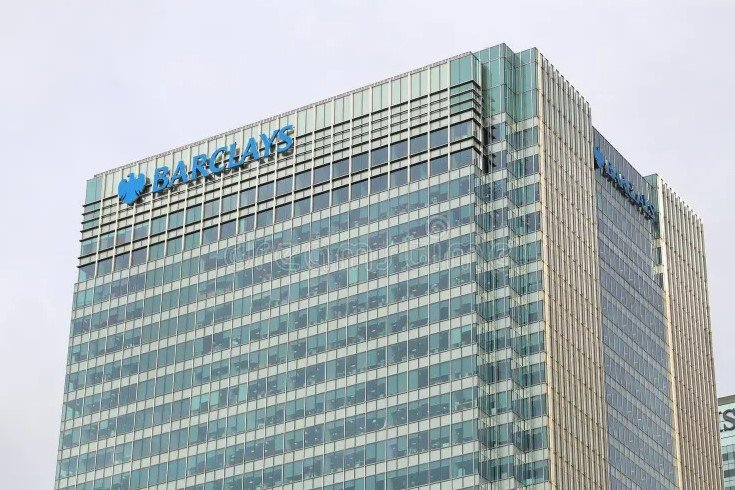Investment bank income jumps 10%, lifting EPS and clearing the way for £1B buyback
Barclays just gave the markets something to cheer about. The British banking giant delivered stronger-than-expected profits in the second quarter, with investment banking revenues getting a turbo boost from market mayhem unleashed by new U.S. tariffs.
A sharp rebound in trading activity helped the bank post a pre-tax profit of £2.5 billion ($3.34 billion) — smashing analyst estimates of £2.23 billion. Group revenue, meanwhile, held steady with forecasts at £7.2 billion. The bank also greenlit a chunky £1 billion share buyback, underscoring a confident outlook even as global markets remain edgy.
Tariffs Spark Chaos — and Big Gains for Traders
At the heart of Barclays’ earnings beat was a familiar engine: volatility.
When U.S. President Donald Trump unveiled a new wave of tariffs back in April, financial markets didn’t take it well. Equities nosedived. Currencies swung. Bond yields snapped. But for traders? It was a golden opportunity.
Barclays capitalized — big time.
The bank’s investment unit raked in £3.3 billion in the second quarter, up 10% from a year ago. That jump helped offset weaker revenues from advisory deals and commissions. Net interest income also climbed, thanks to sticky inflation and still-elevated rates across the UK and Europe.
One-sentence detour here: This wasn’t just a good quarter — it was a very Barclays quarter.
By the Numbers: A Snapshot of the Quarter
Here’s a quick breakdown of the key financials from Barclays’ Q2 earnings:
| Metric | Q2 2025 Result | Q1 2025 or Estimate |
|---|---|---|
| Pre-tax profit | £2.5 billion | £2.23 billion (estimate) |
| Group revenue | £7.2 billion | £7.2 billion (estimate) |
| Return on Tangible Equity | 13.2% | 14% (Q1) |
| Earnings per Share | 11.7p | 8.3p (Q1) |
| CET1 Capital Ratio | 14% | 13.9% (Q1) |
| Investment Banking Income | £3.3 billion | +10% year-over-year |
EPS jumped from 8.3p in Q1 to 11.7p, reflecting stronger profitability across the board. The bank’s CET1 capital ratio — a critical measure of solvency — edged higher too, from 13.9% to 14%, giving it breathing room for shareholder payouts and stress buffers.

Cost Cuts Are Starting to Bite — In a Good Way
Alongside the trading boom, Barclays CEO C.S. Venkatakrishnan pointed to operational progress on cost-cutting — a long-running effort to slim down legacy operations and boost margins.
The bank didn’t break out detailed expense data in the headline release, but Venkatakrishnan made it clear: “We are delivering on our cost-reduction targets.”
Translation? Trims to back-office staff, branch consolidations, and simplified tech platforms are all paying off. Investors — especially in London — have been eager to see sharper discipline from the bank after years of middling returns and regulatory headaches.
There’s more work to do, sure. But this quarter felt like a step forward.
Markets Recovery Helped — But the Road Was Bumpy
It wasn’t just the tariff shock that made waves. The recovery that followed was equally dramatic.
European equities rebounded faster than expected, while U.S. stocks took longer to regain footing. Currency markets, on the other hand, remain choppy — especially with the dollar falling hard against the euro and yen.
For Barclays, this cocktail of chaos-and-recovery was ideal. Its global trading desks thrived on swings, while its European footprint provided relative stability as London markets calmed.
Here’s what helped Barclays stand out this quarter:
-
Strong fixed-income trading performance
-
Higher net interest income from European rate stability
-
Limited exposure to U.S. regional banks or CRE drag
-
Prudent capital management supporting buybacks
Barclays vs. the Field: Who’s Winning the Banking Brawl?
Barclays wasn’t the only bank to cash in on Q2 volatility — but it may have done the best job threading the needle between risk and reward.
Germany’s Deutsche Bank also beat forecasts last week, leaning on its fixed income unit. U.S. majors like JPMorgan Chase and Morgan Stanley delivered solid results on the back of trading revenues, but also flagged pressure from shrinking deal pipelines and rising delinquencies.
Barclays, meanwhile, kept things tidy.
Its advisory division dipped, yes, but not alarmingly. And thanks to the bank’s UK consumer arm, it had a solid buffer against global uncertainties.
Even with its Return on Tangible Equity dipping slightly from Q1’s 14% to 13.2%, investors appeared satisfied. The share buyback announcement — worth £1 billion — was a cherry on top.
What’s Next for the British Lender?
All eyes now turn to Q3. If global markets stay as twitchy as they’ve been, Barclays could have another strong quarter on its hands. But the real test will be in how it balances momentum in investment banking with broader restructuring efforts.
Venkatakrishnan is likely to keep pushing on two fronts: boosting returns in the IB unit while paring down less profitable lines elsewhere. The cost cuts, the buyback, the solid capital buffer — all of it points to a bank that’s finally learning how to do more with less.
But there’s still pressure. Inflation in the UK hasn’t cooled as fast as hoped. The political climate is heating up again. And international banking remains, well, unpredictable.








